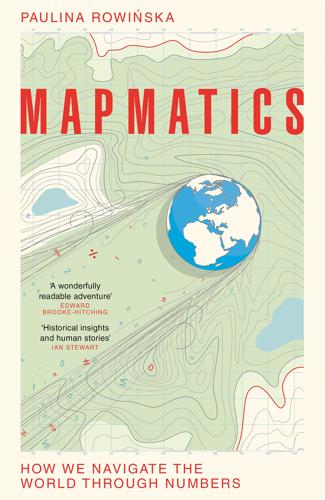
Mapmatics: How We Navigate the World Through Numbers
by
Paulina Rowinska
Published 5 Jun 2024
Maths for geography, geography for maths Having read about the principles behind the Mercator projection, you might think it’s possible to go ahead and draw it. If only it was that simple. We know how to project the globe onto a cylinder, but the second step of the Mercator projection – the stretching of gaps between parallels – isn’t clear. Mercator didn’t say how exactly he did it, making it all but impossible to reproduce his result. Maybe that’s a good thing, as the quest to mathematically describe the Mercator projection led to a surprising mathematical result. In 1599, thirty years after the release of Mercator’s map and five years after Mercator’s death, an English mathematician, Edward Wright, published a detailed description of the mathematical principles of the Mercator projection.
…
FIGURE 2.5: If l is very small, we can find the distance L’ on the Mercator projection as a sum l × sec(θ1) + l × sec(θ2) + l × sec(θ3). In case this feels like too much maths, Wright offered an alternative, physical interpretation of the Mercator projection. This time, it might be helpful to imagine the Earth as a spherical balloon wrapped in a cylinder as earlier, when the globe had a light bulb inside. Now blow the balloon up so that it expands as much as possible,* and mark every point on the balloon that touches the cylinder. Unwrap the cylinder, and voilà, your Mercator projection is ready! Once again, mathematics came to the aid of cartography and navigation, and perhaps the story could end here.
…
In 1599, thirty years after the release of Mercator’s map and five years after Mercator’s death, an English mathematician, Edward Wright, published a detailed description of the mathematical principles of the Mercator projection. In Certaine Errors in Navigation, he tackled the mistakes made by sailors in navigating the sea. Since Mercator had designed his projection to prevent these errors, it’s only natural that Wright focused his research on understanding this map’s mathematical principles. Recognizing the potential of the Mercator projection to aid sailors, Wright aimed to develop exact formulae for its vertical and horizontal stretch. A good grasp of today’s high school trigonometry should suffice to understand the horizontal stretch, as described by V.
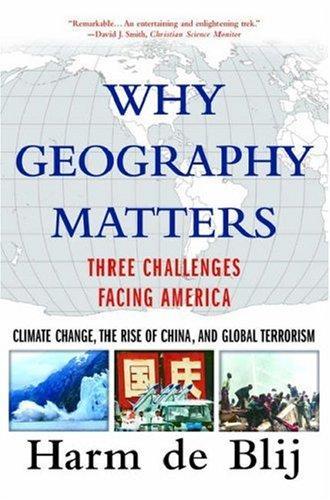
Why geography matters: three challenges facing America : climate change, the rise of China, and global terrorism
by
Harm J. De Blij
Published 15 Nov 2007
Magellan and his crew were the first to circumnavigate the world (1519-1522), building on Cabral's impressions of the coast of Brazil and proving the vastness of the Pacific; the Italian Battista Agnese's 1544 map of the world was soon renowned for its beauty as well as its novelty; and the Flemish mathematician and cartographer Gerardus Mercator formulated a grid for the evolving map of the world that allowed navigators to plot a straight-line compass bearing, the Mercator Projection (1569). This was a momentous innovation, and the name Mercator remains famous to this day—as well as another of his inventions, the concept of the atlas (which he named after a Greek titan) as a collection of maps. 23 24 WHY GEOGRAPHY MATTERS It is well to remember, however, that Europeans were not the only map-makers of the time.
…
MAP PROJECTIONS This brings us to the interesting topic of map projections. Earlier 1 mentioned Mercator and his milestone navigation-friendly projection, without saying exactly what a map "projection" is but pointing out that projections inevitably distort the reality on the ground (Greenland's huge size on the Mercator projection is a case in point). The fact is that you can manipulate map projections to exaggerate, diminish, distort, and otherwise modify any representation of any part of the Earth's surface. Countries can be made to look larger, compared to others, than they really are. Places can be made to look closer to you than they really are.
…
The parallels and meridians would throw shadows onto the paper, creating a kind of READING MAPS AND FACING THREATS 33 projection—not a usable one, but now it becomes a matter of manipulating the light source or the paper. If you put a neon tube inside, pole to pole, you would get something close to the Mercator projection. If you made a conical "hat" of the paper and put it on the Northern Hemisphere, rather than a cylinder all around the globe, you would get less distortion—but only half the world. Indeed, some projections are called "cylindrical" and others "conical." If you want to produce a comparatively low-distortion map of the United States, you would use a conical projection (Fig. 2-3).
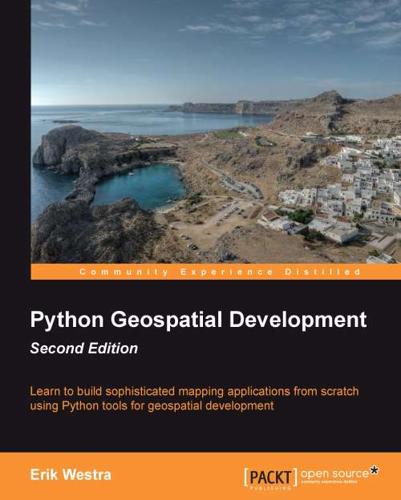
Python Geospatial Development - Second Edition
by
Erik Westra
Published 23 May 2013
Cylindrical projections An easy way to understand cylindrical projections is to imagine that the earth is like a spherical Chinese lantern, with a candle in the middle: If you placed this lantern-earth inside a paper cylinder, the candle would "project" the surface of the earth onto the inside of the cylinder: You can then "unwrap" this cylinder to obtain a two-dimensional image of the earth: Of course, this is a simplification—in reality, map projections don't actually use light sources to project the earth's surface onto a plane, but instead use sophisticated mathematical transformations to achieve the same effect. Some of the main types of cylindrical projections include the Mercator Projection, the Equal-Area Cylindrical Projection, and the Universal Transverse Mercator Projection. The following map, taken from Wikipedia, is an example of a Mercator projection: Conic projections A conic projection is obtained by projecting the earth's surface onto a cone: The cone is then "unwrapped" to produce the final map. Some of the more common types of conic projections include the Albers Equal-Area Projection, the Lambert Conformal Conic Projection, and the Equidistant Projection.
…
Proj Proj is a cartographic transformation class, allowing you to convert geographic coordinates (that is, latitude and longitude values) into cartographic coordinates (x, y values, by default in meters) and vice versa. When you create a new Proj instance, you specify the projection, datum, and other values used to describe how the projection is to be done. For example, to use the Transverse Mercator projection and the WGS84 ellipsoid, you would do the following: projection = pyproj.Proj(proj='tmerc', ellps='WGS84') Once you have created a Proj instance, you can use it to convert a latitude and longitude to an (x, y) coordinate using the given projection. You can also use it to do an inverse projection—that is, converting from an (x, y) coordinate back into a latitude and longitude value again.
…
So let's start by downloading some geospatial data in Universal Transverse Mercator (UTM) projection. The WebGIS website (http://webgis.com) provides shapefiles describing land-use and land-cover, called LULC datafiles. For this example, we will download a shapefile for southern Florida (Dade County, to be exact), which uses the Universal Transverse Mercator projection. You can download this shapefile from the following URL: http://webgis.com/MAPS/fl/lulcutm/miami.zip The decompressed directory contains the shapefile, called miami.shp, along with a datum_reference.txt file describing the shapefile's coordinate system. This file tells us the following: The LULC shape file was generated from the original USGS GIRAS LULC file by Lakes Environmental Software.
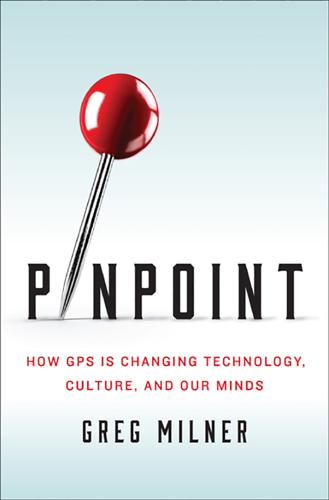
Pinpoint: How GPS Is Changing Our World
by
Greg Milner
Published 4 May 2016
As any user of etak (the ancient Pacific navigational aid, not the 1980’s proto-GPS car guidance system) will tell you, this is a view of the world completely at odds with the way parallels and meridians behave on the earth’s curved surface, and grossly distorts the size of land masses the closer they are to the poles. The Mercator projection remained popular throughout the centuries. In the 1980s, cartographical societies drafted a resolution that discouraged any further use of it, in favor of equal-area maps, which more accurately depict the relative size of land masses. Around the same time, the first mass-market computerized maps appeared. Some used the Mercator projection, others did not, and well into the 1990s there was no clear preference. For Google Maps, which appeared in 2005 and soon became the world’s most accessible GIS, the Mercator projection was an obvious choice. At every point on a Mercator map, “north” points in exactly the same direction, making it more suitable for panning and zooming.
…
In a strange city, with no map or GPS, we remember how many blocks we have ventured from the hotel; we locate ourselves in relation to prominent landmarks. But mostly, in the age of GPS, we don’t require the environment to locate ourselves. Imagine trying to convince a literal-minded Martian anthropologist—or the Carolinian navigator—why the first mapped image of the world many children study is the Mercator projection that is still a staple of grade-school classrooms, with its grotesque geographic distortions. Or why the X on a shopping mall’s map, labeled “you are here,” does not imply a belief that you are actually, you know, there, engraved on that map, anchored for eternity. Lewis suspected that Tevake used a reference system similar to etak, one that allowed him to conceptualize where he was in relation to islands in the region.
…
But to say that GIS helps a GPS receiver know the real world—knowledge it then imparts to us, the users—is not quite right. Like any map, the GIS component of GPS offers an actively mediated representation of the world. GPS therefore constructs its own version of the world, not a mirror image of “reality.” To represent geographic data, Google Maps uses the Mercator projection, named after the sixteenth-century cartographer Gerardus Mercator, which represents latitude and longitude as being perfectly perpendicular. Sailors and navigators liked this projection because a ship on a steady bearing was represented by a straight line on the map. As any user of etak (the ancient Pacific navigational aid, not the 1980’s proto-GPS car guidance system) will tell you, this is a view of the world completely at odds with the way parallels and meridians behave on the earth’s curved surface, and grossly distorts the size of land masses the closer they are to the poles.
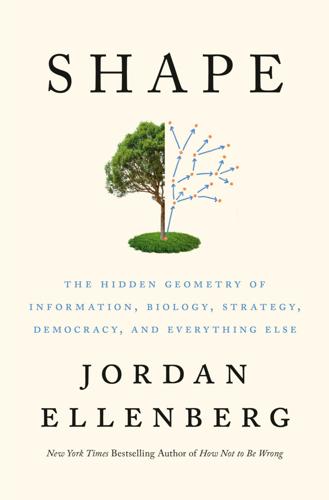
Shape: The Hidden Geometry of Information, Biology, Strategy, Democracy, and Everything Else
by
Jordan Ellenberg
Published 14 May 2021
He is known today for the one he made in 1569, which he called Nova et Aucta Orbis Terrae Descriptio ad Usum Navigantium Emendata (“New and Expanded World Map Corrected for Sailors”) and which we now call the Mercator projection. Mercator’s map was good for sailors because what mattered to them wasn’t taking the absolutely shortest route; what mattered to them was not getting lost. At sea, you can use a compass to keep yourself at a fixed angle to the north (or at least the magnetic north, which is hopefully not too far off). In a Mercator projection, north-south lines of longitude are vertical lines, latitudes are horizontal, and all angles on the map are the same as they are in real life.
…
Indeed, Mercator cut his off at parallels well short of the poles to avoid the painfully apparent Arctic and Antarctic distortions. Latitude lines near the poles get farther and farther apart on the map, while in real life they’re separated by the same distance. That makes things in the polar region look bigger than they really are. In the Mercator projection, there’s as much Greenland as there is Africa. In reality, Africa is fourteen times bigger. Couldn’t there be a better projection? You might want great circles to show up as straight lines (a gnomonic projection) and you might want the relative areas of geographic objects to match real life (an authalic projection) and you might want the projection to get angles right (a conformal projection, of which Mercator’s is one).
…
From this point of view, it hardly seems unfair that Wyoming has two senators—look how much Wyoming there is! But this, of course, is an artifact of the way we draw the map. Senators represent people, not acres. We’ve already encountered the “too much Greenland” problem—standard maps like the Mercator projection distort areas, making some regions look bigger than the space they actually take up on the globe. What if there was a map that assigned each state an amount of space according to its population instead of its area, more accurately rendering the people the Senate is supposed to represent? Geometry can do that.

The Spirit of ST Louis
by
Charles A. Lindbergh
Published 2 Jan 1953
We've never had a request for them before." That means a trip up north. I'll try to borrow one of the Ryan Company's monoplanes. 10 The store at San Pedro has drawers of charts that apparently cover all the earth's salt water. "I think these are what you want." The salesman pulls out two oblong sheets. They're Mercator's projections and --yes, I'm in luck -- they extend inland far enough to include New York and Paris. Then, like stumbling over a nugget of gold, I see a gnomonic projection covering them both. "A great circle on the earth's surface translates into a curve on a Mercator's chart, but it becomes a straight line on a gnomonic projection" -- I remember learning that in the Army's navigation class.
…
My navigating problems have begun to clarify. I found, printed on the charts I bought, ample instructions for laying out my great-circle route. With the instruments Hall loaned me, I drew a straight line between New York and Paris on the gnomonic projection. Then I transferred points from that line, at hundred-mile intervals, to the Mercator's projection, and connected these points with straight lines. At each point, I marked down the distance from New York and the magnetic course to the next change in angle. I chose hundred-mile intervals as convenient distances to work with because, wind and cruising speed considered, it seems likely that the Spirit of St.
…
After spending several days at this task, I reach a point in the Atlantic twelve hundred miles beyond the coast of Newfoundland. My mathematical route and my charted route coincide so closely that it seems time wasted to continue with the calculations. I have satisfied myself that the headings I marked on the Mercator's projections are correct; and there are other problems which demand attention. Now that I have my courses laid out properly, I must be sure I can hold them -- over the ocean -- over fog -- at night -- and with unknown wind drifts. Should I buy a sextant and study celestial navigation? But could I handle a sextant at the same time I'm flying a plane?
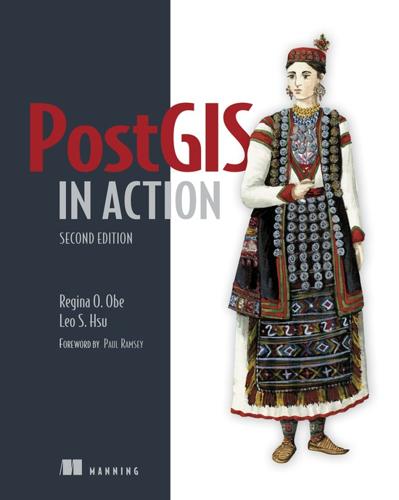
PostGIS in Action
by
Regina O. Obe
and
Leo S. Hsu
Published 2 May 2015
If you try to optimize for shape and to cover a large range, your measurements may be off, perhaps way off. There are a few flavors of projections you can use to optimize for different things: Cylindrical projections —Imagine a piece of paper rolled around the globe, imprinting the globe on its surface. Then you unroll it to make it flat. The most common of these is the Mercator projection, which has the bottom of the rolled cylinder parallel to the equator. This results in great distortion at the polar regions, with measurement accuracy better the closer you are to the equator, because there the approximation of flat is most accurate. Conic projections —These are sort of like cylindrical projections, except you wrap a cone around the globe, take the imprint of the globe on the cone, and then roll it out.
…
You can’t use them for the polar regions. Mercator —These are good for maintaining shape and direction and spanning the globe, but they’re not good for measurement, and they make the regions near the poles look huge. The measurements you get from them are nothing less than cartoonish, depending on where you are. The most common Mercator projections in use are variants of World Mercator (SRID 3395) or Spherical Mercator (a.k.a. Google Mercator (SRID 900913)), which is now an EPSG standard with EPSG:3857 (but for a time was EPSG:3785). This last one is fairly new, so you may not find it in your spatial_ref_sys table if your PostGIS version is older.
…
Although the transformation process is fairly cheap, it can quickly become taxing with the more data you pull, the more users hitting your database, or the greater number of points you have in a geometry. Not as many tools support geography. In theory, though, any tool that just uses the ST_AsBinary and other output functions of PostGIS geometries will work fine with geography without any change. 3.2.3. Mapping just for presentation Although the basic Mercator projections are horrible for measurement calculations, especially far from the equator, they’re a favorite for web mappers because they look good on a map. The advantage of Google Mercator, for example, is that the whole globe is covered with just one spatial reference system. So if your primary concern is looking good on a map and overlaying Google Maps with something like OpenLayers, Leaflet, or some other JavaScript API, Mercator isn’t a bad option for native data storage.
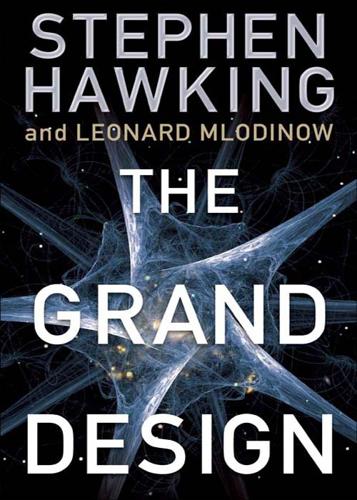
The Grand Design
by
Stephen Hawking
and
Leonard Mlodinow
Published 14 Jun 2010
M-theory is not a theory in the usual sense. It is a whole family of different theories, each of which is a good description of observations only in some range of physical situations. It is a bit like a map. As is well known, one cannot show the whole of the earth’s surface on a single map. The usual Mercator projection used for maps of the world makes areas appear larger and larger in the far north and south and doesn’t cover the North and South Poles. To faithfully map the entire earth, one has to use a collection of maps, each of which covers a limited region. The maps overlap each other, and where they do, they show the same landscape.
…
The different theories in the M-theory family may look very different, but they can all be regarded as aspects of the same underlying theory. They are versions of the theory that are applicable only in limited ranges—for example, when certain quantities such as energy are small. Like the overlapping maps in a Mercator projection, where the ranges of different versions overlap, they predict the same phenomena. But just as there is no flat map that is a good representation of the earth’s entire surface, there is no single theory that is a good representation of observations in all situations. We will describe how M-theory may offer answers to the question of creation.
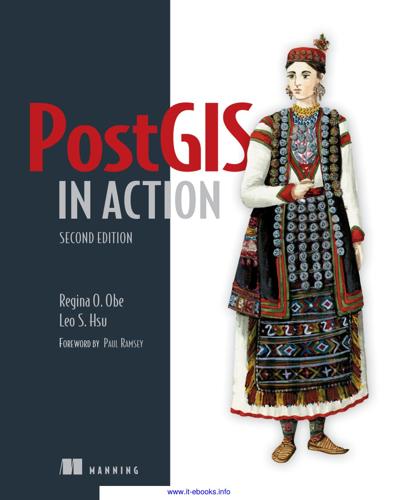
PostGIS in Action, 2nd Edition
by
Regina O. Obe
and
Leo S. Hsu
Published 2 May 2015
If you try to optimize for shape and to cover a large range, your measurements may be off, perhaps way off. There are a few flavors of projections you can use to optimize for different things: Cylindrical projections—Imagine a piece of paper rolled around the globe, imprinting the globe on its surface. Then you unroll it to make it flat. The most common of these is the Mercator projection, which has the bottom of the rolled cylinder parallel to the equator. This results in great distortion at the polar regions, with measurement accuracy better the closer you are to the equator, because there the approximation of flat is most accurate. Conic projections—These are sort of like cylindrical projections, except you wrap a cone around the globe, take the imprint of the globe on the cone, and then roll it out. Azimuthal projections—You project a spherical surface onto a plane tangential to the spheroid.
…
You can’t use them for the polar regions. Mercator—These are good for maintaining shape and direction and spanning the globe, but they’re not good for measurement, and they make the regions near the poles look huge. The measurements you get from them are nothing less than cartoonish, depending on where you are. The most common Mercator projections in use are variants of World Mercator (SRID 3395) or Spherical Mercator (a.k.a. Google Mercator (SRID 900913)), which is now an EPSG standard with EPSG:3857 (but for a time was EPSG:3785). This last one is fairly new, so you may not find it in your spatial_ref_sys table if your PostGIS version is older.
…
Although the transformation process is fairly cheap, it can quickly become taxing with the more data you pull, the more users hitting your database, or the greater number of points you have in a geometry. Not as many tools support geography. In theory, though, any tool that just uses the ST_AsBinary and other output functions of PostGIS geometries will work fine with geography without any change. 3.2.3 Mapping just for presentation Although the basic Mercator projections are horrible for measurement calculations, especially far from the equator, they’re a favorite for web mappers because they look Licensed to tracy moore <nordick.an@gmail.com> www.it-ebooks.info 72 CHAPTER 3 Spatial reference system considerations good on a map. The advantage of Google Mercator, for example, is that the whole globe is covered with just one spatial reference system.
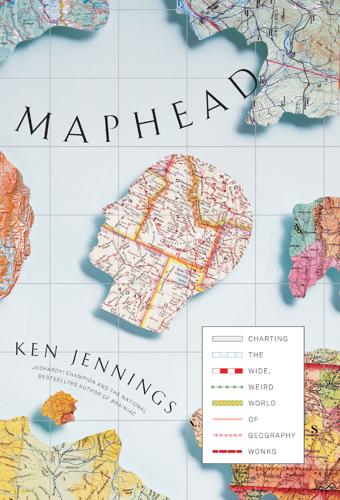
Maphead: Charting the Wide, Weird World of Geography Wonks
by
Ken Jennings
Published 19 Sep 2011
Mapmakers may make all these choices with the best of intentions, but the result is still, even if unconsciously, to reinforce some particular view of the world. I distinctly remember not believing, when my parents first told me, that Brazil was actually five times the size of Alaska. On the map of my bedroom wall, I could see with my own eyes that they were virtually twins! That’s because my map was drawn according to the venerable Mercator Projection. In 1569, the Flemish cartographer Gerardus Mercator drew a world map using a cylindrical projection that would neatly render a rhumb line—a ship’s course in a constant direction, like west or north-northeast—as a straight line.* The problem is that this kind of projection inflates the polar regions way out of proportion—in fact, on such a map, the poles can never even be drawn, because they’re an infinite distance from the Equator.† Mercator maps were still used everywhere when I was growing up—classrooms, nightly newscasts, stamps, government briefing rooms—and so my generation grew up thinking that Greenland was bigger than Africa, since Greenland is oversized fourteenfold on Mercator maps.
…
I stared at the map endlessly, marveling at the big, muscular Africa dominating its center and the anemic Russia and Alaska hugging the North Pole. I’d been told that the maps I knew were lying to me about the globe, but it was quite another thing to see the evidence with my own eyes. You can trace the decline of the Mercator Projection by looking at the set changes on Saturday Night Live’s “Weekend Update” faux newscast. The world outline map behind the newscasters was an acromegalic Mercator back in the Dan Aykroyd/Jane Curtin era, but under Dennis Miller it was replaced with a less absurd, modified Mercator called the Miller (no relation) cylindrical projection.
…
But the Mercator map of our childhoods, though less visible today, is far from extinct. For example, use Google to bring up a map of your street or your city. Now zoom all the way out—yup, all the way, so the entire planet is on the map. See how Antarctica now looks bigger than every other continent put together? That’s right: Google Maps still uses a Mercator Projection.* The Mercator and Gall-Peters: Greenland’s favorite and least favorite map projections, respectively So it’s easy to quibble with McClendon’s assertion that everything on Google’s maps is unimpeachably true in some epistemological sense.† In some ways, it’s as full of judgment calls and compromises as any other map.

Tubes: A Journey to the Center of the Internet
by
Andrew Blum
Published 28 May 2012
A test print had been lain out on a large easel lit with klieg lights, like an operating table. Krisetya pulled off his thick-framed glasses and placed a magnifying loupe to his eye. I stood just over his shoulder, squinting at the bright lights, struggling to take in the world this map portrayed. It was a Mercator projection, with the continents drawn in heavy black and the international boundaries etched, like afterthoughts, by thin scores. Rigid red and yellow lines striped the Atlantic and Pacific, jagged around the southern continents, and converged in key places: north and south of New York City, in the southwest of England, the straits near Taiwan, and the Red Sea—so tightly there that they formed a single thick mark.
…
Gilbert is chief operating officer of Rudin Management, the great family-owned New York City real estate company that in 1999 became only the second owner, after AT&T, of 32 Avenue of the Americas. He was an imposing figure in crisp white shirtsleeves and silk power tie—a startling change from the network engineers in their hoodies. He stood beneath a lobby mosaic: an ocher-tinged Mercator projection beneath which is written the building’s motto: “Telephone wires and radio unite to make neighbors of nations.” “Why is radio in there?” Gilbert asked rhetorically, still gripping my hand. “When this building opened, there were no transatlantic telephone cables, only radios on buoys. Then, in 1955, this was built.”
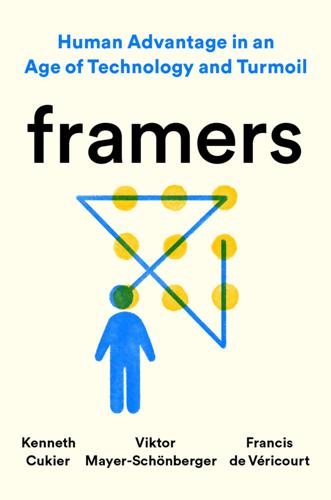
Framers: Human Advantage in an Age of Technology and Turmoil
by
Kenneth Cukier
,
Viktor Mayer-Schönberger
and
Francis de Véricourt
Published 10 May 2021
Even for topographical maps there are dozens of methods for drawing them, since the surface of a sphere can be projected onto a two-dimensional plane in different ways. Each has its strengths and weaknesses. Pick one in which longitude and latitude are projected perpendicular to each other—such as maps that use the common Mercator projection—and the area becomes more distorted the farther you go from the center. This makes Alaska look bigger than Australia even though it’s less than a quarter the size. Other maps show correct size for area but distort shape. It’s always a trade-off. Hence the question “What map is best?” is nonsensical in the abstract.
…
On maps and frames: Bas van Fraassen, a philosopher of science, argues that maps and scientific representations are in many respects the same. In his view, we could also consider scientific models as scientific maps. See Bas van Fraassen, The Scientific Representation (Oxford: Oxford University Press, 2008). On the map’s Mercator projection: John Noble Wilford, “Arthur H. Robinson, 89, Geographer Who Reinterpreted World Map, Dies,” New York Times, November 15, 2004, https://www.nytimes.com/2004/11/15/obituaries/arthur-h-robinson-89-geographer-who-reinterpreted-world-map-dies.html; John Noble Wilford, “The Impossible Quest for the Perfect Map,” New York Times, October 25, 1988, https://www.nytimes.com/1988/10/25/science/the-impossible-quest-for-the-perfect-map.html.
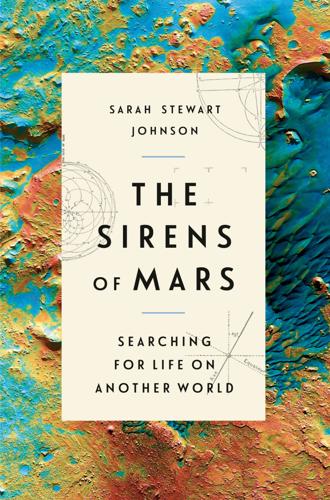
The Sirens of Mars: Searching for Life on Another World
by
Sarah Stewart Johnson
Published 6 Jul 2020
The contrast couldn’t be more striking. Mars is smooth, awash in creamy pastels of peach and gray. Tracts of bright and dark areas are graced with names that curve and slant to fit the landscape: Thaumasia arcs over Solis Lacus; Mare Hadriaticum is horseshoed around the bowl of Hellas. Above and below the rectangular Mercator projection of the planet are smaller views of the curved Martian globe, six in all, floating against the blackness of space like a collection of holiday ornaments. Whereas the Mariner image is a set of static pixels, lingering alone, the planning map is a representation of a world. It’s hypnotic, suffused with meaning.
…
Even Eagle fit the convention, as it was also the name of the famous spacecraft that delivered Neil Armstrong and Buzz Aldrin to the surface of the moon. “FIRST NAVCAM FRAME” Squyres, Roving Mars: Spirit, Opportunity, and the Exploration of the Red Planet, p. 335. DRIVEN AND DRIVEN Ibid., p. 334. A NEW MAP Bruce C. Heezen and Marie Tharp, “World Ocean Floor Panorama,” full color, painted by H. Berann, Mercator projection, scale 1, no. 23,230,300 (1977). SAGAN BARELY SET FOOT Steve went on to work closely with other Cornell professors, including Joseph Veverka (his scientific advisor), Arthur Bloom, Steven Ostro, and William Travers, as well as Gene Shoemaker at USGS and several members of the Voyager imaging team.

Top 10 Brussels, Bruges, Antwerp & Ghent
by
Antony Mason
King Léopold II Second king of Belgium (ruled 1865–1909) (For further details see King Léopold II). Paul-Henri Spaak Socialist prime minister during the post-war years, Spaak (1899–1972) played a central role in the creation of the European Community. < Top 10 of Everything Famous Belgians Gerard Mercator Most school maps of the world are still based on the “Mercator projection” – an ingenious way of representing the spherical globe on a flat page. Mercator (1512–94) is also credited with creating the first “atlas”, a word he introduced. Georges Simenon One of the world’s best-selling authors, Simenon (1903–89) was born and bred in Liège. His most famous creation, Inspector Maigret, appeared in 75 of his 400 novels.
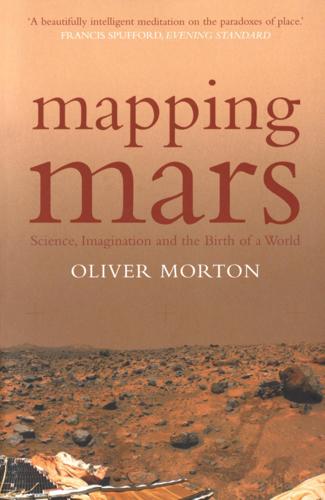
Mapping Mars: Science, Imagination and the Birth of a World
by
Oliver Morton
Published 15 Feb 2003
The third is that though Mars is considerably smaller than the Earth—a little more than half its radius, a little more than a tenth its mass—its surface area, at roughly a third of the Earth’s, is quite similar to that of the Earth’s continents. When Mädler came to compile his observations into a chart in 1840, mathematically transforming his sketches of the disc of Mars into a rectangular Mercator projection, he declined to name the features he recorded, but did single out the small dark region he had used to time the Martian day as the site of his prime meridian, centering his map on it. Future astronomers followed him in the matter of the meridian while eagerly making good his oversight in the matter of names.
…
Just across the aisle from Pilcher’s attempt to share the pain of his bruised community was a special presentation by the MOLA team. As befits a geophysical instrument, MOLA is in the numbers game. If you put enough numbers together, though, you can get a pretty good picture. The MOLA team had taken their data set, arranged it on a Mercator projection, and printed it out as a map. The first version of this map, published in the journal Science the summer before, had been impressive. Garishly colorful, it had shown so much detail in its crater rims and mountain tops that many looking at it had assumed it was a colorful overlay superimposed on some sort of photomosaic or airbrushed map.

The Secret War Between Downloading and Uploading: Tales of the Computer as Culture Machine
by
Peter Lunenfeld
Published 31 Mar 2011
Often laid out on the unfolded polyhedron of Fuller’s own Dymaxion map, the game used a synergistic rather than competitive play strategy to determine ways to best harness the natural resources of the planet. Fuller’s map gives a better sense of the relative sizes of the continents than the usual Mercator projections, and even more subversively does not have a natural “up” or “down” that de-privileges people’s usual expectations of maps and the sense of space that they project. Fuller maintained that the goal was to “make the world work, for 100% of humanity, in the shortest possible time, through spontaneous cooperation, without ecological offense or the disadvantage of anyone.”

Everydata: The Misinformation Hidden in the Little Data You Consume Every Day
by
John H. Johnson
Published 27 Apr 2016
This mapmaking technique required some finagling on Mercator’s part, since a sailor’s direct path on a three-dimensional globe doesn’t automatically translate to a straight line on a two-dimensional map. But Mercator figured out how to do it, and enjoyed the fame and fortune that followed.1 FIGURE 6-1 A Mercator projection. Licensed under the Creative Commons Attribution-Share Alike 3.0 Unported license. Created by user $200inaire on Wikimedia Commons. (https://commons.wikimedia.org/wiki/File:Mercator_Blank_Map_World.png#filelinks) FIGURE 6-2 For comparison purposes, here’s a Winkel tripel projection. Licensed under the Creative Commons Attribution-Share Alike 3.0 Unported license.
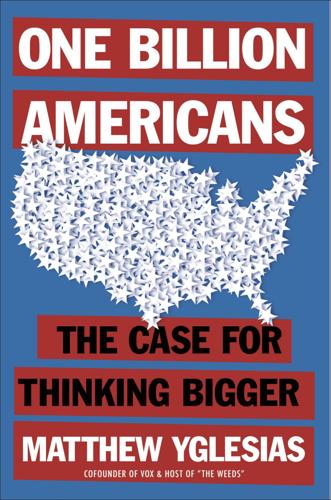
One Billion Americans: The Case for Thinking Bigger
by
Matthew Yglesias
Published 14 Sep 2020
The United States contains a significant mountainous region that is not well suited to large-scale habitation. But Japan (899 per square mile) and Switzerland (566 per square mile) have plenty of mountains too. Another objection is that Alaska accounts for a large chunk of America’s land area. This is somewhat less true in reality than a Mercator projection makes it look, but it is true that all the arctic nations—Russia, Canada, Norway, Sweden, Finland—tend toward low population densities.* On a warming planet this is perhaps less of an inevitability going forward than it has been in the past. But I don’t want you to think that the viability of one billion Americans hinges on a mass migration to Alaska.
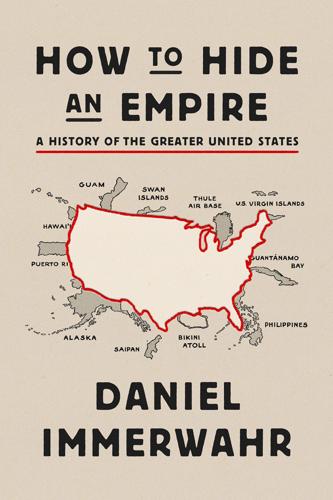
How to Hide an Empire: A History of the Greater United States
by
Daniel Immerwahr
Published 19 Feb 2019
That report was sent on November 30, 1941. A week later, Filipinos noticed some unfamiliar planes in the sky. 11 WARFARE STATE “War,” the comedian Jon Stewart has observed, is “God’s way of teaching Americans geography.” Certainly the Japanese attacks on December 7/8, 1941, were an education. For those used to the Mercator projection maps that placed Japan on the right side (in the “Far East”) and Hawai‘i on the left, Pearl Harbor offered a textbook lesson in the perils of representing a round world on a flat surface. Even territories that weren’t struck, such as Alaska, popped out with unsettling clarity once Japan had shown the extent of its ambitions.
…
McCain, John McCartney, Paul McCormick, Katharine Dexter McDonald’s restaurants McKinley, William; assassination of; reelection of; during war with Spain McLaughlin, Donal McNutt, Paul Mead, Margaret measles medical experiments Medicare and Medicaid Melville, Herman Memorial Hospital (New York) Mercator projection maps Merseyside (England) metric system Metropolitan Museum of Art (New York) Mexican Americans Mexican War Mexico Mexico City Miami (Florida) Miamis Michigan; University of Micronesia; Federated States of; strategic trust territory in, see Trust Territory of the Pacific Islands Middle East; rebellion against empire in; see also specific colonies, nations, and regions Midway Island military bases; al-Qaeda; Japanese; see also U.S. overseas bases Miller, Orville H.
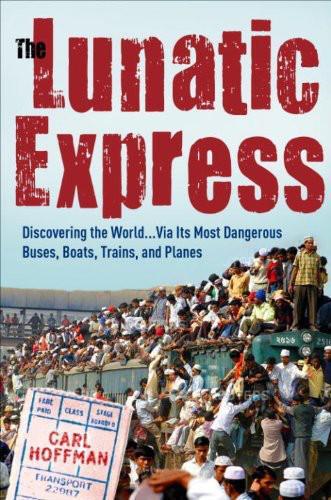
The Lunatic Express
by
Carl Hoffman
Published 16 Mar 2010
“I’ve been working twelve hours a day, seven days a week, for six months straight, and I quit because they weren’t paying us enough. We were supposed to have one day a week off, but we didn’t.” He’d been working on a dredging barge creating The World, a miniature land of islands in the shape of a Mercator projection of the world’s continents on which vacation villas for the rich would be built, with a crew of Iranians and Filipinos. “In Dubai I never saw an Arab,” he said. “Indians, Bangladeshis, Filipinos, Indonesians only.” Over the years he’d worked in Singapore, in Brunei, on oil rigs off the island of Kalimantan, and he straddled worlds.

Kingpin: How One Hacker Took Over the Billion-Dollar Cybercrime Underground
by
Kevin Poulsen
Published 22 Feb 2011
And one more that was less usual: UBuyWeRush—the only retail sign in Los Angeles that was also a handle on CarderPlanet and Shadowcrew. He walked into the front office, where an empty reception window suggested the sixty-cent-per-square-foot space had once been a medical clinic. On the wall a Mercator projection map of the world bristled with pushpins. Then Chris was greeted warmly by UBuy himself, Cesar Carrenza. Cesar had come to the underground by a circuitous course. He graduated from the DeVry Institute in 2001 with a degree in computer programming, hoping to get an Internet job. When he couldn’t find one, he decided to try his hand as an independent businessman on the Web.
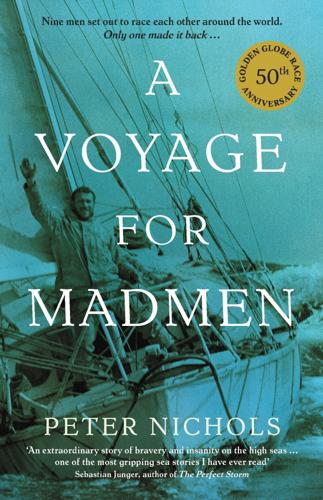
Voyage for Madmen
by
Peter Nichols
Published 1 May 2011
It has been suggested that Crowhurst initiated radio silence at this point to overcome the apparent obstacle of sending radio messages to stations in faraway Australia and New Zealand, as though he were in the Pacific, while all the time remaining in the Atlantic. But this would not have been a problem. On a Mercator-projected map of the world, his position off the coast of South America, roughly near Buenos Aires, does seem a long way from Australia or New Zealand. But on the true, round earth, he was no further, as the signal flew across Antarctica, from Sydney (7,300 miles away) or Wellington (6,200 miles) than from Portishead Radio, north of London (7,000 miles), which he was able to reach without difficulty.

Supertall: How the World's Tallest Buildings Are Reshaping Our Cities and Our Lives
by
Stefan Al
Published 11 Apr 2022
Entire ancient empires, such as the Greeks, expanded around seas following the logic of warships, simply because Greek galleys were the best way to move troops and goods around. And the benefits of access to the waterways still shape cities. Today, fourteen of the world’s seventeen largest cities lie in coastal areas.4 Transportation systems have even warped our representations of the world. The map projection used widely today is the Mercator projection, based on the 1569 Gerardus Mercator map, to facilitate maritime navigation. It unrolls the earth’s sphere into a cylinder, remapping constant-bearing sailing courses on the sphere to straight lines. This causes deformation toward the outer ends, making areas close to the poles appear larger.

Accessory to War: The Unspoken Alliance Between Astrophysics and the Military
by
Neil Degrasse Tyson
and
Avis Lang
Published 10 Sep 2018
Harley, “Rereading the Maps of the Columbian Encounter,” Annals of the Association of American Geographers 82:3 (Sept. 1992), 529–30. 54.Denis Cosgrove, “Globalism and Tolerance in Early Modern Geography,” Annals of the Assoc. of Amer. Geographers 93:4 (Dec. 2003), 854; 852–70. 55.E. G. R. Taylor, “Gerard Mercator: A.D. 1512–1594,” Geographical J. 128:2 (June 1962), 202; Mark Monmonier, Rhumb Lines and Map Wars: A Social History of the Mercator Projection (Chicago: University of Chicago Press, 2004), chap. 3, “Mercator’s Résumé,” www.press.uchicago.edu/Misc/Chicago/534316.html (accessed Apr. 8, 2017); David Turnbull, “Cartography and Science in Early Modern Europe: Mapping the Construction of Knowledge Spaces,” Imago Mundi 48 (1996), 14, 23 nn. 46, 48.
…
Many failed to answer the questionnaire; those who did often misunderstood the questions or the instructions on making observations or gave inaccurate responses.” 56.Wright published his mathematical principles and his world map in 1599, in Certaine Errors in Navigation, and is sometimes credited with creating the first world map based on the Mercator projection after Mercator’s own of 1569. But Wright had given a Dutch acquaintance, Jocodus Hondius, an early version of the manuscript of Certaine Errors sometime before 1593, and Hondius, although having promised not to publish any of the information, seems to have preempted Wright by creating a world map of his own in 1598, as well as maps of individual regions.
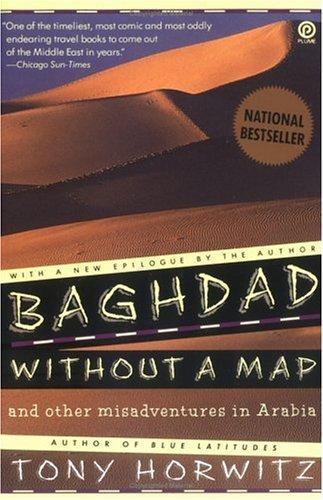
Baghdad Without a Map and Other Misadventures in Arabia
by
Tony Horwitz
Published 1 Jan 1991
Mahn at the Information Ministry in Baghdad: a small glass globe containing an inch of dirt and a tiny Iraqi flag, commemorating Iraq's “liberation” of a strategic peninsula called Faw. The globe's wooden base bore an inscription that read: “The Earth of Faw Mixed with Blood of Iraqi Martyrs.” It was destined for the mantelpiece in London. I hit on the television to keep me company while I packed. The English-language news began as it always did, with a crude Mercator projection of the Middle East and an off-speed medley of Arab tunes. An anchorman began reading the AP wire in halting English. There was shelling again in Beirut. Something about hostages in the Bekaa Valley. A new American plan for Middle East peace. And the Israelis had shot dead two more Palestinians in Gaza.

E=mc2: A Biography of the World's Most Famous Equation
by
David Bodanis
Published 25 May 2009
But although a direct application of the contraction factor from the note on page 249 would suggest this to be the case, what actually occurs is more subtle, due to such effects as the way light coming from different parts of the car must be emitted at different times. Distortions are similar to the way the three-dimensional Earth gets skewed when it’s converted into two-dimensional Mercator projections for maps. 83 The Global Positioning System . . . : Along with the corrections applied to GPS satellite signals that do stem from special relativity, substantial effects are also due to general relativistic considerations, as is well surveyed in Clifford M. Will, Was Einstein Right: Putting General Relativity to the Test (Oxford: Oxford University Press, 1993).
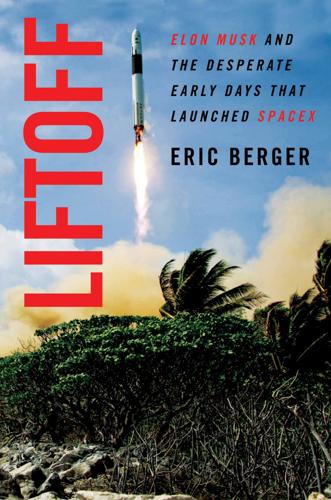
Liftoff: Elon Musk and the Desperate Early Days That Launched SpaceX
by
Eric Berger
Published 2 Mar 2021
“This was a launch deal they were ready to sign,” said Gwynne Shotwell, then the vice president for sales, who was eager to reach an agreement. “They had six million bucks. We wanted to sign them, but we had to find a launch site near the equator.” Shotwell’s cubicle was near Koenigsmann’s, and together in the spring of 2003 they looked at a Mercator projection map of the world. Koenigsmann traced his hand west along the equator from the coast of California. It was all ocean until he got to the Marshall Islands, some five thousand miles away. As they looked at the sprawling chain of tiny islands, Shotwell recognized the Kwajalein Atoll. She remembered something about fighting there during World War II, and felt pretty sure the U.S. military maintained a presence.
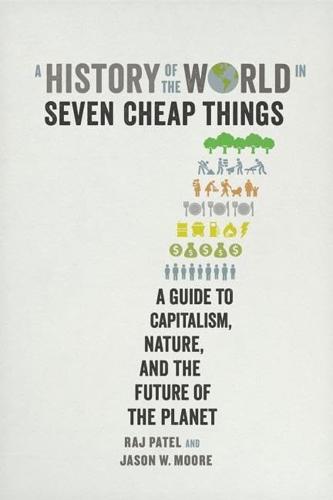
A History of the World in Seven Cheap Things: A Guide to Capitalism, Nature, and the Future of the Planet
by
Raj Patel
and
Jason W. Moore
Published 16 Oct 2017
Beginning in 1503, Portugal launched a series of invasions of the Indian Ocean world, seizing over the next decade the central hinges of the ocean’s lucrative trade: Hormuz on the Persian Gulf, Goa in western India, and Malacca in southeastern Asia.36 Sixteenth-century maps like the planisphere and the portolan charts used by sailors quickly yielded to the modern world’s most famous—and still most used—cartographic technology: the Mercator projection. Gerard Mercator, whose (invented) family name translates to “merchant,” lived most of his life in Flanders, in present-day Belgium, one of his era’s most commercially dynamic regions. Europe’s greatest geographer, he made his living by selling not maps but globes—at the beginning of a time when it became possible to think of the planet as a sphere.37 Mercator’s project was revolutionary in fusing the new cartography with the demands of rapacious and militarized commercial expansion.
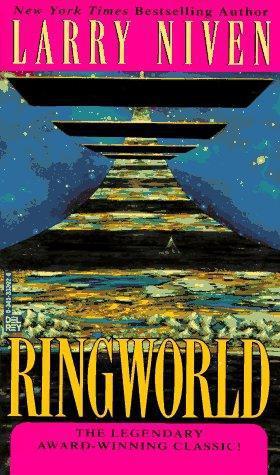
Ringworld
by
Larry Niven
Published 12 Sep 1985
Nessus had been steering when they left Zignamuclickclick. Later he had turned the fleet over to Speaker. They had flown all night. Now, overhead, a brighter glow along one edge of the central shadow square showed that dawn was near. Sometime during these past hours, Louis had found a way to visualize the scale of the Ringworld. It involved a Mercator projection of the planet Earth—a common, rectangular, classroom wall map—but with the equator drawn to one-to-one scale. One could relief-sculpt such a map, so that standing near the equator would be exactly like standing on the real Earth. But one could draw forty such maps, edge to edge, across the width of the Ringworld.
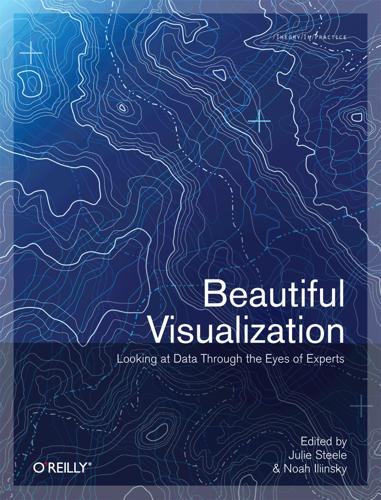
Beautiful Visualization
by
Julie Steele
Published 20 Apr 2010
Many of these are applicable to both presentation and exploration of data: Change the view Pan over or zoom in on a fixed image, such as a map or a large data space. Change the charting surface On a plot, change the axes (e.g., change from linear to log scale). On a map, change from, for example, a Mercator projection to a globe. Filter the data Remove data points from the current view following a particular selection criterion. Reorder the data Change the order of points (e.g., alphabetize a series of columns). Change the representation Change from a bar chart to a pie chart; change the layout of a graph; change the colors of nodes.

Cockpit Confidential: Everything You Need to Know About Air Travel: Questions, Answers, and Reflections
by
Patrick Smith
Published 6 May 2013
These routes won’t make sense if you’re looking at a traditional flat map, because when the earth is crushed from its natural round state into a horizontal one, it becomes distorted as the divisions of latitude and longitude stretch apart. (Depending on the layout used—what cartographers call “projection”—the distortion can be grotesque. Kids grow up believing that Greenland is about ten times larger than it really is, thanks to the preposterous polar dimensions of the commonly used Mercator projection.) If you have a globe handy, however, the logic of great circles is very apparent. Measuring with a piece of string, it’s obvious that the shortest distance between New York and Hong Kong, for instance, is not westerly, as it would seem on a map, but pretty much straight north, up into the Arctic, and then straight south.

We Are Data: Algorithms and the Making of Our Digital Selves
by
John Cheney-Lippold
Published 1 May 2017
For purposes of this example, this centroid is the point on a 2-D graph that establishes the statistical mean of each measurable type.84 In the first instance, the idea of ‘woman’ may unsurprisingly find its normative center in the exact middle of a graph (x = 0, y = 0; figure 2.8). Like a Mercator Projection map, this empowered perspective has perfect staticity—cybernetically continuing, if all things remain equal, without need for alteration. Its stability will sustain forever: if you go to WomensHealth.gov, Jezebel.com, and Cosmopolitan.com and download Dar Williams MP3s, you are a ‘woman.’ If you don’t, you aren’t.

A Place of My Own: The Architecture of Daydreams
by
Michael Pollan
Published 15 Jan 1997
White pine blushes faintly pink, swirling here and there with nuttier streaks of heartwood, and as the permanent wetting of the oil brought forward the sweeping grain and figuration of my ash, I could make out beneath the desk’s finish what looked like a half-dozen baseball bats flattened out in a kind of Mercator projection. There are boards in this building already as familiar to me as the skin on the back of my hand. HABITABLE FURNITURE Two and half years ago, when I mentioned to Charlie that I conceived of my building as a piece of furniture, all I had in mind was a particular scale and a tightly ordered, ship-shape layout—certainly not an intricate wooden interior that I would end up sanding and oiling and rubbing every square inch of by hand.

Elon Musk: Tesla, SpaceX, and the Quest for a Fantastic Future
by
Ashlee Vance
Published 18 May 2015
Lockheed and Boeing, which fly $1 billion spy satellites for the military from Vandenberg, didn’t care for SpaceX’s presence, either—in part because SpaceX represented a threat to their business and in part because this startup was mucking around near their precious cargo. As SpaceX started to move from the testing phase to the launch, it was told to get in line. They would have to wait months to launch. “Even though they said we could fly, it was clear that we would not,” said Gwynne Shotwell. Searching for a new site, Shotwell and Hans Koenigsmann put a Mercator projection of the world up on the wall and looked for a name they recognized along the equator, where the planet spins faster and gives rockets an added boost. The first name that jumped out was Kwajalein Island—or Kwaj—the largest island in an atoll between Guam and Hawaii in the Pacific Ocean and part of the Republic of the Marshall Islands.
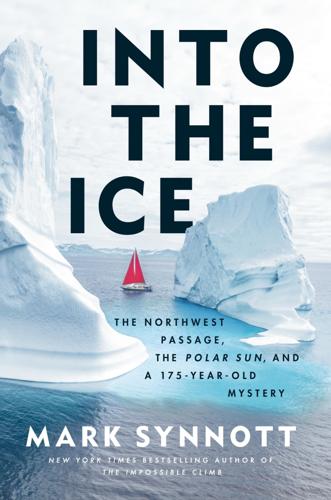
Into the Ice: The Northwest Passage, the Polar Sun, and a 175-Year-Old Mystery
by
Mark Synnott
Published 14 Apr 2025
This was the map on which Mercator first shared his famed “projection,” which took the curved latitudinal lines you’d find on a globe and stretched them out so that sailors could use them to plot “great circle” courses across the oceans. To make his projection work, Mercator had to distort the high latitudes, making them look far larger than they are. This is why, even today, we all think that Greenland is three times larger than it really is. According to the math used to create the Mercator projection, the top (and bottom) of the world would approach infinity in size. Rather than distort his map even further, Mercator created an insert with a top-down view of the Arctic. But in the sixteenth century, Europeans knew almost nothing about the high latitudes. Inuit and their predecessors had lived and thrived north of the Arctic Circle for thousands of years in what would later become parts of Alaska, Canada, and Greenland, as had the Sami in northern Finland.
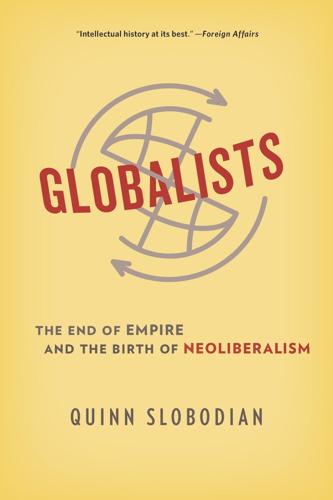
Globalists
by
Quinn Slobodian
Published 16 Mar 2018
In the text, he called it an icon of “the freedom to sell in the market place.”82 The fact that Rivera was a card-carrying Communist best known for his workerist murals was no obstacle to Petersmann’s misrepresentation of Rivera’s work to reinforce his own dedication to market rights as the most fundamental of human rights.83 A more fitting choice was made by Lamy for his book on the Geneva Consensus: one of the newer paintings that decorated the WTO’s walls, from the Danaé World Suite, 2001 by Jean-Claude Prêtre. The painting shows a Mercator projection of the world beneath a grid of crosses and flecks of colorful paint. Barely visible underneath are the outlines of the continents. The image suggests something closer to what the institution was built on. Notwithstanding the late conversion to a language of human rights, it is a conception of the world economy at the edges of representation, in a perpetual state of morphing and transformation, encased by a grid of rules.
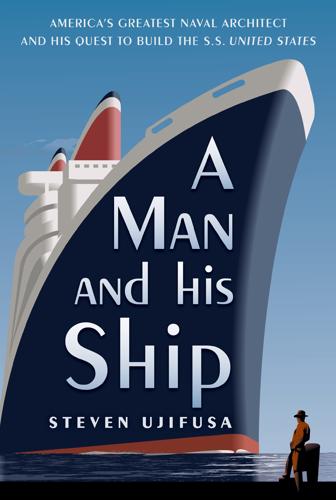
A Man and His Ship: America's Greatest Naval Architect and His Quest to Build the S.S. United States
by
Steven Ujifusa
Published 9 Jul 2012
Marckwald, who derided what she called the traditional “elk horn” style, could not panel the walls with oak or mahogany, nor could she hang its windows with heavy velvet curtains. Plus she abhorred “muddy” colors. On United States, she had the smoke room walls painted jet black and covered the windows (which overlooked the enclosed promenade) with plaid drapery. For the room’s centerpiece, William King created a simple aluminum Mercator projection of the world for the forward bulkhead. Small clocks positioned above each meridian showed the times of day around the world. A well-stocked bar was placed on the opposite side of the room. Chairs and couches upholstered in red leather—fireproofed, of course—completed the clubby look. It was not quite New York’s University Club or London’s Royal Automobile Club, but it was close enough considering the restrictions.
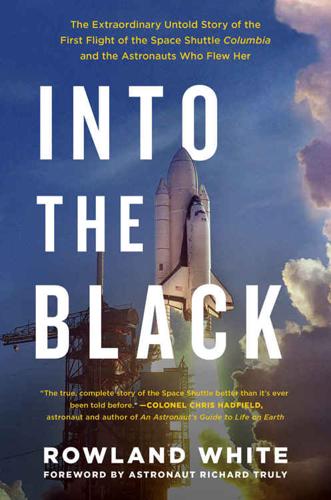
Into the Black: The Extraordinary Untold Story of the First Flight of the Space Shuttle Columbia and the Astronauts Who Flew Her
by
Rowland White
and
Richard Truly
Published 18 Apr 2016
His movement restricted by the layers of his Nomex pressure suit, Young reached forward to the coaming above the instrument panel and punched a button to switch the orbiter’s body flap from manual to automatic. SIXTY-THREE Houston, 1981 Inside Mission Control there was tension you could chew. The Mercator projection world map that had recorded Columbia’s orbital track around the globe on big screens in front of the consoles was taken down. In its place went a graphic showing the Shuttle’s velocity and ground track across the Pacific toward the West Coast. The former was also included in the flight dynamics data displayed in front of Joe Allen and Rick Hauck at CapCom.

Connectography: Mapping the Future of Global Civilization
by
Parag Khanna
Published 18 Apr 2016
BOX: Rivers over Borders How to Negotiate with Nature BOX: Measuring the Supply Chain’s Footprint Location, Location, Location CONCLUSION: FROM CONNECTIVITY TO RESILIENCE A New Moral Compass Networks That Run Themselves Building a Borderless World Recommended Sites and Tools for Mapping Map Insert Dedication Acknowledgments Notes Bibliography Map Credits and Sources By Parag Khanna About the Author PROLOGUE The natural consequence of any obsession is passing it on to one’s children. I’ve been collecting globes, maps, and other geographic artifacts since my itinerant childhood. Thus it is hardly a coincidence to have been writing portions of this book while methodically assembling a thousand-piece world map with my daughter. The map is a Mercator projection, named for the sixteenth-century Flemish geographer who sought to make maps more useful for navigation but in the process massively distorted the scale of the extreme latitudes. Hence my daughter exclaiming, “Greenland is so big!” (While also wondering why it was colored orange.) Africa was the easiest continent to piece together: With fifty-four countries, each little jigsaw shape was full of clues such as contrasting national colors and city names.
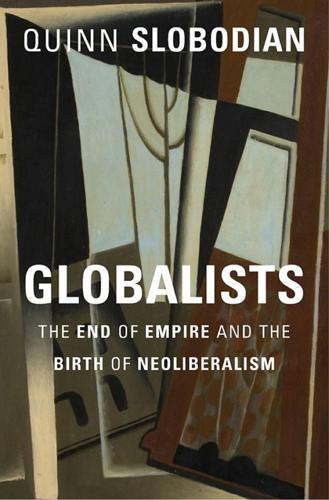
Globalists: The End of Empire and the Birth of Neoliberalism
by
Quinn Slobodian
Published 16 Mar 2018
In the text, he called it an icon of “the freedom to sell in the market place.”82 The fact that Rivera was a card-carrying Communist best known for his workerist murals was no obstacle to Petersmann’s misrepresentation of Rivera’s work to reinforce his own dedication to market rights as the most fundamental of human rights.83 A more fitting choice was made by Lamy for his book on the Geneva Consensus: one of the newer paintings that decorated the WTO’s walls, from the Danaé World Suite, 2001 by Jean-Claude Prêtre. The painting shows a Mercator projection of the world beneath a grid of crosses and flecks of 282 GLOBALISTS The world at the edges of representation. Pascal Lamy, The Geneva Consensus: Making Trade Work for All (Cambridge: Cambridge University Press, 2013). Reprinted by permission of the publisher. colorful paint. Barely visible underneath are the outlines of the continents.
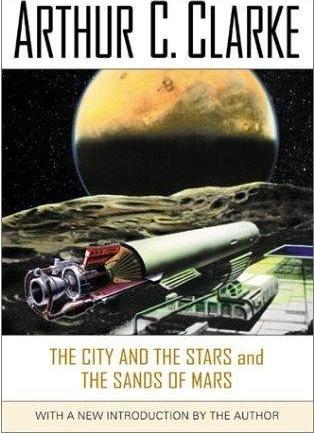
The City and the Stars / The Sands of Mars
by
Arthur C. Clarke
Published 23 Oct 2010
Only 6,000 kilometers from the surface of the planet, and with a gravity less than a thousandth of Earth’s, it was ideal for this purpose. The Ares was due to dock in less than a week, and already Mars was a small disc showing numerous surface markings even to the naked eye. Gibson had borrowed a large Mercator projection of the planet and had begun to learn the names of its chief features— names that had been given, most of them, more than a century ago by astronomers who had certainly never dreamed that men would one day use them as part of their normal lives. How poetical those old mapmakers had been when they had ransacked mythology!

A People's History of the United States
by
Howard Zinn
Published 2 Jan 1977
The historian’s distortion is more than technical, it is ideological; it is released into a world of contending interests, where any chosen emphasis supports (whether the historian means to or not) some kind of interest, whether economic or political or racial or national or sexual. Furthermore, this ideological interest is not openly expressed in the way a mapmaker’s technical interest is obvious (“This is a Mercator projection for long-range navigation—for short-range, you’d better use a different projection”). No, it is presented as if all readers of history had a common interest which historians serve to the best of their ability. This is not intentional deception; the historian has been trained in a society in which education and knowledge are put forward as technical problems of excellence and not as tools for contending social classes, races, nations.
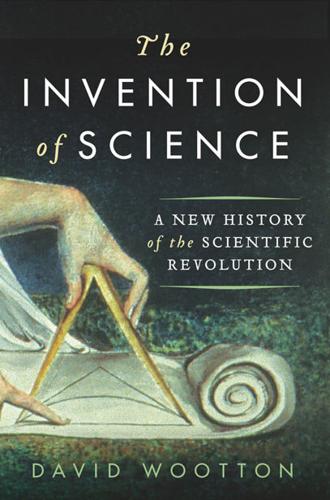
The Invention of Science: A New History of the Scientific Revolution
by
David Wootton
Published 7 Dec 2015
Loth to goe up the hill, or labour thus To goe to heaven, we make heaven come to us.82 European world maps placed Europe at the centre, but when the Chinese were shown a world map by Matteo Ricci and complained that China should be at the centre, he promptly produced a new map which did just that.xix Mercator’s projection (1599), when used to produce a world map, shrinks countries close to the equator and makes the northern countries appear much larger than they really are, but this is an entirely accidental consequence of constructing a projection which enables a course plotted on a chart to be used directly for navigational purposes; the Mercator projection, which shows a three-dimensional globe on a flat surface, distorts distances in order to preserve accuracy when it comes to directions. These maps were originally intended as tools for sailors, not assertions of European supremacy; they look like ideological statements only to people who do not use them for navigation.
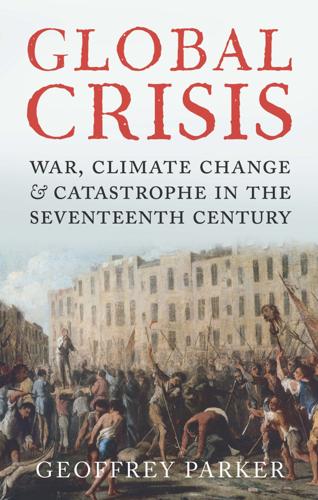
Global Crisis: War, Climate Change and Catastrophe in the Seventeenth Century
by
Geoffrey Parker
Published 29 Apr 2013
The victors then undertook campaigns of conquest that eventually created a state twice as large as Ming China and endured for two centuries. No other political change in the mid-seventeenth century affected so many people, caused so much damage, or created such lasting consequences. 16. Ming China and its neighbours. Most maps of East Asia use Mercator's projection, which increases the size of Ming China compared with the steppes where the Manchu dynasty achieved dominance in the early seventeenth century. In 1644, the Great Wall failed to protect Beijing (the Ming northern capital) from capture, first by a bandit army from the west and then by the Manchus from the north.